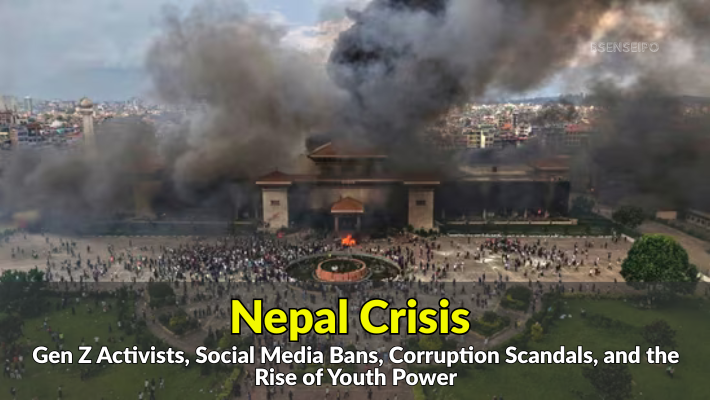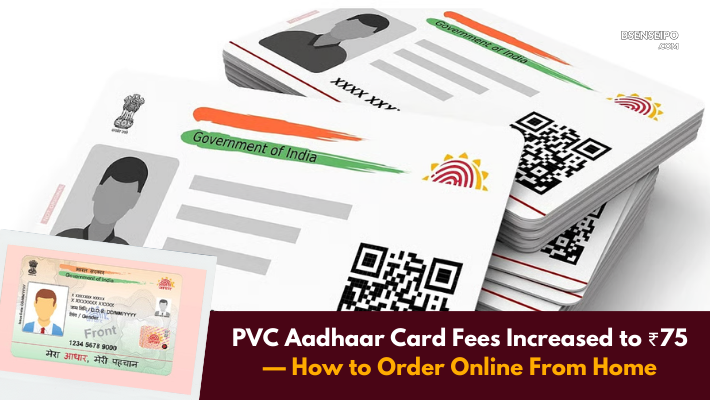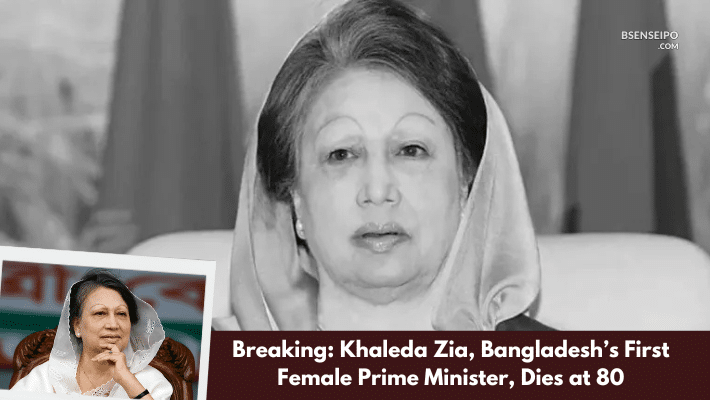Nepal’s Gen-Z Uprising: How Young Activists Overthrew the Government & Are Now Shaping a New Transitional Order
Nepal Crisis: Harnessing Discord, Instagram & street mobilisation, youth-led movement under Sudan Gurung’s Hami Nepal forces PM Oli’s resignation, installs interim leadership under former Chief Justice Sushila Karki, with focus on cutting corruption and elevating youth voices.
Nepal Crisis: Nepal is witnessing a political upheaval unlike any in recent memory. What began as protests against a social media ban and widespread corruption has transformed into a youth-driven revolution that toppled the government, appointed new leadership, and is pushing for systemic change. Under Sudan Gurung’s leadership, the non-profit group Hami Nepal has gone from digital organising to becoming a key influencer in the creation of an interim government. But the cost has been high: dozens dead, thousands injured, and a nation asking whether this moment can build something durable.
Origins: Spark, Grievances & Mobilization
- Catalyst: The immediate trigger was a sweeping ban by Prime Minister K.P. Sharma Oli’s government on dozens of social media platforms that refused to register under government directives. The ban was meant to address concerns like misinformation, fake IDs, and hate speech but was widely seen as censorship.
- Underlying Discontent: Frustration over systemic corruption, nepotism, elitism, lack of job opportunities for youth, inequality and perceived detachment of political leaders from ordinary citizens fueled the anger. Stories of children of politicians flaunting wealth during times of national hardship resonated deeply among Nepal’s Gen Z.
- Digital Organisation: A key distinguishing feature was how Hami Nepal and allied Gen Z groups used platforms like Discord (often with VPNs to bypass restrictions) and Instagram to coordinate, share information, issue calls to protest, monitor disinformation, and organise logistics. Discord, in particular, served as a semi-private, rapidly scalable network for strategy and mobilisation.
Nepal Crisis – From Protest to Power Shift
- Escalation & Violence: Protests began peacefully but clashes with security forces escalated. Use of tear gas, rubber bullets, water cannons, and, reportedly, live ammunition, resulted in many casualties. The destruction of infrastructure—mansions, government and judicial buildings, police posts—and attempts on key power centers followed.
- Casualties & Damage: According to Nepal’s health ministry and multiple reports, at least 51 people were killed and over 1,300 injured during the protests. The toll includes protestors, some prisoners, police officials, and others. Buildings including the parliament, supreme court, and officials’ private residences were damaged or set on fire.
- Government Resignation: Facing mounting pressure, Prime Minister Oli resigned. The social media ban was lifted. Some ministers stepped down. Curfews and security measures were imposed but could not quash the movement.
Sudan Gurung & Hami Nepal: New Political Brokers
- Who is Sudan Gurung? A 36-year-old civic activist, formerly involved in relief work (e.g. during the 2015 quake and COVID-19). Through his NGO, Hami Nepal (“We Are Nepal”), Gurung emerged as a central figure, not by holding formal office but by facilitating organisation, message, trust, and coordination.
- Role of Youth Leadership: Although the movement is broadly “Gen Z-led,” leadership has also included slightly older figures. The emphasis, however, is on capable, skilled youth forming part of decision-making rather than simply being protesters. Gurung and his team have reportedly declined direct cabinet positions, though they are influencing who fills those roles.
- Interim Government & Reform Agenda: After Oli’s exit, the group lobbied for a respected interim leadership. They succeeded in having former Chief Justice Sushila Karki named interim Prime Minister—a figure noted for her anti-corruption stance and judicial independence. The group is now proposing cabinet changes, removing officials appointed under the previous regime, pushing for reforms in the judiciary, constitutional protections, and ensuring representation of youth in governance.
Risks, Challenges & What’s Next
- Legitimacy & Institutional Resistance: Youth movements often struggle when transitioning from protest to governance. Old guard institutions—political parties, civil service, legal bureaucracy—may resist changes to power structures, accountability mechanisms, or redistribution of authority. Ensuring that interim changes are not superficial or reversed later will be a test.
- Violence & Human Rights Concerns: The high death toll, injuries, reports of live fire, property damage, and arrests raise serious questions about excessive force, accountability, and potential abuses. Independent investigations, reparations for victims, and protections for protesters are crucial. International rights organisations have already called for investigations.
- Managing Expectations & Preventing Fragmentation: With crowds, social media, and dozens of local and informal groups involved, maintaining unity of goals, strategy, and messaging is difficult. There’s also the risk of radical factions pushing for extremism or conflicting demands undermining reform efforts. The pressure for quick results—jobs, transparency, reforms—may lead to impatience.
- Election & Long-Term Democracy: The interim government is expected to hold national elections (scheduled for March 5, 2026) under constitutionally permissible frameworks. Ensuring those elections are free, fair, inclusive, with meaningful participation from youth and civil society, is vital for the movement’s legacy.
Implications & Broader Significance
- Youth as Political Actors: This crisis shows young people are not only willing to protest but to organise, strategise, and demand institutional change. Digital platforms like Discord are becoming central tools for political mobilisation—not only communicating grievances but coordinating actionable strategy.
- Digital Era of Protest: The social media ban served as a spark, but the movement’s resilience despite bans underscores how digital infrastructure, VPNs, decentralized platforms, and grassroots networks can bypass censorship.
- Corruption & Trust Deficit: The protests reflect a deeper erosion of trust between citizens and political elites. When leaders are perceived to benefit themselves while governance suffers, legitimacy collapses.
- Potential for Reform vs. Return to the Old Ways: The appointment of Sushila Karki and the elevation of youth voices suggest real opportunity. But the depth of reform—judiciary independence, constitutional protections, anti-corruption legal enforcement, oversight of elite wealth—will determine whether this becomes a turning point or another tumultuous interlude.
Conclusion
Nepal Crisis: Nepal’s Gen-Z protests mark one of the most significant political ruptures in decades. Driven by youth, organised digitally, reacting to corruption and censorship—and despite violence and risk—they have succeeded in toppling a government and installing interim leadership seen as more credible. The road ahead, however, is fraught: from navigating institutional inertia to preventing escalation; from delivering justice to winning hearts; from symbolic change to structural transformation.
If the urgent demands for transparency, youth engagement, and rule of law are met beyond rhetoric, Nepal may emerge from this crisis with a renewed democratic social contract. If not, the disillusionment may deepen, and this movement’s energy could fracture or be co-opted. For now, the promise is real—and so is the challenge.




